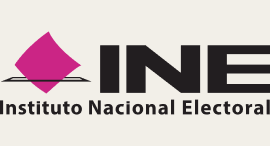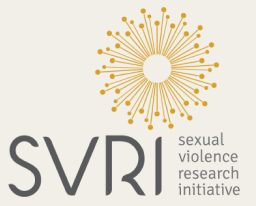On March 12, 2020 China’s deputy director of its Ministry of Foreign Affairs, Zhao Lijian published an unusual tweet. It claimed that the United States army brought COVID-19 to China when the country participated in the October 2019 Military Olympic Games.[1] The claim, if not a conspiracy, was not supported by any evidence. It spread like wildfire, becoming a global piece of misinformation about the origin of the pandemic.
A few days later, disinformation messages arrived on the cell phones and social media feeds of individual American citizens. One post read, “The Trump administration is about to lock down the entire country,” which was later confirmed to be false. United States officials considered the tactic an unprecedented move by Chinese agents[2].
The University of Hong Kong’s censorship monitoring project, Weiboscope, monitors the Chinese social platform Weibo for disinformation, misinformation and censorship. Weibo is China’s equivalent to Twitter, and Weiboscope offers key insights into how information control manifests on one of China’s most prominent social networks. As the Chinese government exerts information control over COVID-19 narratives inside China, the international impact of state censorship becomes a significant global issue.
On the afternoon of December 31, 2019 a Weibo post read, “Wuhan pneumonia cannot be judged to be SARS. Wuhan has the only virus laboratory in the country and is also a world-class virology laboratory. There are ways to deal with the virus. If Wuhan can’t figure it out, no one can handle it.” It was swiftly censored within an hour.
The post mentioned both the SARS-like nature of the virus, suggesting its high infection rate, and the Wuhan laboratory, signalling the origin of the virus. Based on our knowledge of the government’s censorship system, both of these characteristics seem to be attributable to the decision to remove the post from the social platform.
At the time, social media was already circulating speculations that an unknown pneumonia was linked to a SARS-like disease, according to Weiboscope data. Ophthalmologist Dr. Li Wenliang, who learned about the then-mysterious illness in a hospital, had sent a message in the popular Chinese private messaging app WeChat, to warn other medical doctors about the unnamed illness. Wenliang was then accused, with another six people, of disturbance of public order by the local authority (Green, 2020).
On December 31, 2019, the same day the post was removed from Weibo and shortly after Wenliang’s warning, the Chinese government claimed the “viral pneumonia cases” had “no apparent pattern of human-to-human transmission” and were “preventable and controllable” (Wuhan Municipal Health Commission, 2019). The Chinese government then also informed the World Health Organization and the United States of its position.
Less than a month later on January 20th, the Chinese central government announced the COVID-19 epidemic to the public (Phillips et al., 2020). A group of leading Chinese virologists appeared on a state television program and confirmed that the virus is transmissible between humans (National Health Commission, 2020). A group of Chinese Center for Disease Control and Prevention scientists published a paper in the New England Journal of Medicine on January 29, 2020 concluding that “human-to-human transmission among close contacts has occurred since the middle of December and spread out gradually within a month after that” (Li et. al., 2020).
Censoring virus-related messages in late December and early January may have put countless Chinese people unknowingly at risk of infection, depriving them of receiving early warning from media and social media about the highly transmissible disease (Fu and Zhu, 2020). The censorship and information control may have also delayed the general public’s response to make necessary and timely protective measures.
How does China control information in general?
Internet and digital technology have been profoundly shaping China’s social, economic, and even political domains. Even though the Internet is known to serve as an enabler for citizen activism in China, the state’s repressive power is remarkably strengthened by means of digital technologies[3]. To illustrate this, for instance, three hundred million cameras will be reportedly installed in China for the purposes of surveillance and the devices are backed with facial and video recognition technologies. Chinese authorities have strongly emphasized the concept of cyber sovereignty, which broadly extends the notion of cyber security as a justification to control certain online activities which could be viewed as a threat to the state’s stability (Lee, 2018). Against this backdrop, China has introduced a sophisticated system to regulate traditional and online media and the system has been integrated into all Internet platforms.
The Chinese government has built the “Great Firewall” – a collective term to describe a large and sophisticated Internet filtering system and digital governance framework. These stringent measures make the Chinese Internet virtually an intranet, in which sensitive private and public communication are filtered, and access to foreign sites such as Facebook, Twitter, and YouTube are blocked. Having said that, these practices are only part of the country’s censorship system. A major part of the content censorship is implemented by domestic Internet content providers. To comply with their license conditions, Chinese Internet service providers must act as censors to screen customer’s messages or disable accounts, which are executed by the company’s internal department or outsourced to external operators.
Chinese citizens also overly rely on local media, which are mostly state-owned, in order to receive information about COVID-19. International media or foreign social media sites are not accessible and posts circulating foreign media are also censored. For example, our system records a censored post on January 18, which is attached with a screen capture of a coronavirus story titled “Four new confirmed cases in Wuhan; Estimated over 1,700 cases, according to expert” from the Hong Kong based media outlet, Radio and Television Hong Kong. Another Weibo message titled “Express: Suspected cases with unknown pneumonia found in South Korea,” which was hyperlinked to a story of the Yonhap News Agency on January 8, 2020, was detected to be censored.
China’s real name registration policy requires Internet users to disclose one’s real identity. The policy was officially launched on March 16, 2012. Registered users must release their identity numbers or indirect identifiers — such as mobile phone numbers — to service providers for government verification. Users can then choose to post either by nickname or real name; unregistered users can view posts, but can’t create content. Much concern has been raised that the true identity disclosure policy has imposed a chilling effect on online comments, especially on political criticism and other sensitive topics (Fu et al., 2013). Recently, the Chinese government reportedly requested new mobile phone users to receive facial scans[4]. Online anonymity is virtually impossible in China. Surveillance cameras, facial recognition technology, and identity tracking have been extensively used to assist the authority’s public monitoring of the implementation of self-quarantine policy during the coronavirus outbreak[5].
China has introduced the Cybersecurity Law, which came into effect on June 1, 2017, and has created substantial market uncertainty[6]. Public and private communication are closely monitored by service providers or/and the authorities. If a content crosses a “red line” (an often invisible, unknown yardstick) it may be censored, or the account owner’s content administrator may be invited to “drink tea”[7], requested to remove it. If an account is repeatedly found to be non-compliant with content regulations, it can be suspended or even permanently terminated[8]. For certain serious offences, the content author may be sentenced to jail[9]. More than that, the “red line” is opaque and its threshold and boundaries are largely unknown: life-style “clickbait” was blocked[10], rap pop music was banned[11], television drama series[12] were disapproved, and video game services were stopped[13]. Three Chinese volunteers were detained by police because of uploading censored COVID-19 material to Github[14].
Impact beyond China’s borders
With China’s economic rise and growing global influence, the country has modernized its information systems and cyber warfare capabilities. Being the second largest economy in the world, information technology is not only key to both economic growth and the vital functions of society in China, but also national security. China now operates the most sophisticated online censorship system in the world, with over 854 million online citizens under its sphere (CNNIC, 2019). Apart from traditional warfare methods such as land, sea, air, and outer space, the online cyberspace has become a highly recognized domain of warfare to the Chinese government (Fritz, 2017). As China increases its engagement with the world, this struggle for controlling the narrative about the Chinese Communist Party and the country has expanded to global public opinion, an ambitious external propaganda project (Tsai, 2017), and the Internet is one of the latest battlespaces via the means of information warfare.
Apart from traditional forms of propaganda published on Chinese state media, there are now cases of organized and coordinated efforts of online influence campaigns on issues deemed of core interest and importance to the Chinese government, such as the detentions of Uyghurs in Xinjiang, the Taiwanese presidential elections, and the more recent Hong Kong protests (Mazarr et al., 2019).
In 2016, in wake of Taiwan President Tsai Ing-wen’s presidential election, over 27,000 comments flooded her Facebook page, mostly stating that Taiwan is a part of China. Since access to Facebook in Mainland China is blocked by the Great Firewall maintained by the state, the flood of comments were known as part of an organized campaign from an Internet forum called “Diba,” where forum users ironically scaled the Great Firewall to post nationalistic messages adhering to the official line of the Chinese Communist Party on Tsai’s Facebook posts (Yang & Chen, 2017).
Diba users have since attempted but failed to influence the narrative on the Hong Kong protests in 2019 as well by trying to infiltrate LIHKG, a local reddit-like online forum frequently used by protesters in Hong Kong. Although no direct connection between the Diba users and the Chinese state were identified, concern has been raised towards a growing trend of either a grassroots level or organized “cyber-nationalism” by younger Chinese Internet users to influence the narrative on topics deemed of strategic value to the Chinese government (Fang & Repnikova, 2018).
Social media sites from the Western world have also acted on what they believe is a coordinated effort by the Chinese government to influence global narrative on China related topics, such as the Hong Kong protests. In August 2019, China’s information operations were brought to the light after several social media platforms, including Twitter and Facebook, discovered the existence of coordinated network activities by China that were spreading disinformation about Hong Kong protests. Twitter said that the aim of these operations was to undermine the protest movement’s “legitimacy and political positions.[15]”
At the time of writing, the COVID-19 pandemic is still developing, and the crisis changes daily, but it seems apparent that the world after COVID-19 will look different. Relationships between China and the world are anticipated to become bitter and more contentious. China’s strategy to control information and its consequences has become a global concern. A lawsuit was launched to sue China for economic losses[16] and an independent investigation into China’s information transparency and the virus origin was suggested. Further development remains an open question.
We collaborated with 53 partner organizations worldwide to design and carry out our 2024 elections projects. We extend special gratitude to our lead partners in Brazil, Mexico and Pakistan, whose work we highlight in this essay.



The 2024 elections projects featured in here would not have been possible without the generous support of these funders.




Footnotes
- Twitter is blocked by the Great Firewall in China.
- Twitter allegedly subject to Chinese censorship reach through hacked accounts and deleted tweets (ABC News)
- Chinese blogger jailed under crackdown on ‘internet rumours’ (The Guardian)
References
- CNNIC. (2019). The 44th Statistical report on internet development in China. China Internet Network Information Center (CNNIC), China.
- Fang, K., & Repnikova, M. (2018). Demystifying “Little Pink”: The creation and evolution of a gendered label for nationalistic activists in China. New Media & Society, 20(6), 2162–2185.
- Freedom House. (2018). Freedom on the Net 2018: The Rise of Digital Authoritarianism.
- Fritz, J. R. (2017). China’s Cyber Warfare: The Evolution of Strategic Doctrine. Lexington Books.
- Fu, K., Chan, C., & Chau, M. (2013). Assessing censorship on microblogs in China: Discriminatory keyword analysis and the real-name registration policy. IEEE Internet Computing, *17(3), 42–50.
- Fu, K., & Zhu, Y. (2020). Did the world overlook the media’s early warning of COVID-19? Journal of Risk Research, 1–5.
- Green, A. (2020). Li Wenliang. The Lancet, 395(10225), 682.
- Lee, J.-A. (2018). Hacking into China’s Cybersecurity Law. Wake Forest L. Rev., 53, 57.
- Li, Q., Guan, X., Wu, P., Wang, X., Zhou, L., Tong, Y., Ren, R., Leung, K. S. M., Lau, E. H. Y., Wong, J. Y., Xing, X., Xiang, N., Wu, Y., Li, C., Chen, Q., Li, D., Liu, T., Zhao, J., Liu, M., … Feng, Z. (2020). Early Transmission Dynamics in Wuhan, China, of Novel Coronavirus–Infected Pneumonia. New England Journal of Medicine, 382(13), 1199–1207.
- Mazarr, M. J., Casey, A., Demus, A., Harold, S. W., Matthews, L. J., Beauchamp-Mustafaga, N., & Sladden, J. (2019). Hostile Social Manipulation Present Realities and Emerging Trends. RAND Corporation Santa Monica United States.
- National Health Commission. (2020). Press Conference of the National Health Commission High-Level Expert Group Regarding the Pneumonia Caused by the Novel Coronavirus Infection.
- Phillips, N., Mallapaty, S., & Cyranoski, D. (2020). How quickly does the Wuhan virus spread? Nature.
- Tsai, W.-H. (2017). Enabling China’s Voice to Be Heard by the World: Ideas and Operations of the Chinese Communist Party’s External Propaganda System. Problems of Post-Communism, 64(3–4), 203–213.
- Wuhan Municipal Health Commission. (2019). Wuhan Municipal Health Commission’s Situation Report of the Epidemic of Pneumonia in Our City (in Chinese).
- Yang, S., & Chen, P.-Y. (2017). “Diba Expedition to Facebook”: A preliminary study of massive online collective action in China. IConference 2017 Proceedings.
Authors
Words by
Dr. King-wa FU is an Associate Professor at the JMSC. His research interests cover political participation and media use, computational media studies, health and the media, and younger generation’s Internet use. He is a visiting Associate Professor at the MIT Media Lab and was a Fulbright-RGC Hong Kong Senior Research Scholar in 2016-2017. He has a PhD from the JMSC, a master’s degree in Social Sciences and a MPhil in Engineering. He was a journalist at the Hong Kong Economic Journal before turning to academia.






